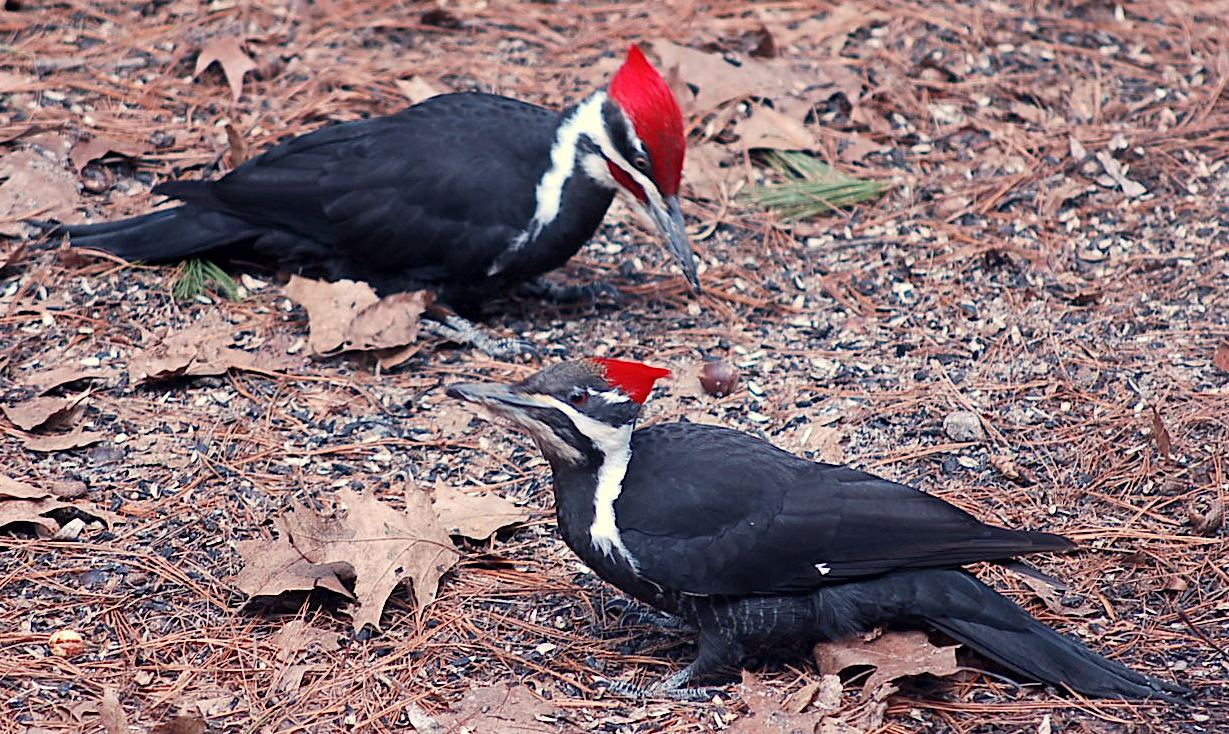Observing Woodpeckers in Florida: Variety Diversity and Circulation
Observing Woodpeckers in Florida: Variety Diversity and Circulation
Blog Article
Woodpeckers: A Comprehensive Guide to Recognizing These Distinct Birds
Woodpeckers, with their distinct habits and physical characteristics, have actually long captivated the curiosity of ornithologists and nature enthusiasts alike. As we explore the complex makeup, diverse varieties, and ecological significance of woodpeckers, a deeper appreciation for these one-of-a-kind birds and the enigmas they hold unfolds.

Woodpeckers' Drumming Actions
Woodpeckers exhibit a rhythmic and precise drumming behavior that offers numerous necessary functions in their every day lives. This habits is primarily connected with interaction, area protection, and foraging. The distinct drumming audio is developed by the quick pecking of their beaks versus tough surface areas such as tree trunks, branches, and even steel items.
Interaction is a vital element of woodpecker habits, and drumming plays a substantial duty in this procedure. Woodpeckers utilize drumming to develop their existence, draw in mates, and maintain call with their companions and children. The frequency, strength, and duration of drumming series share specific messages to other woodpeckers in the area.
Along with interaction, woodpeckers make use of drumming actions for region defense. Woodpeckers in Florida. The loud and repetitive drumming offers as a cautioning to potential intruders, indicating that the location is already declared. By establishing their region via drumming, woodpeckers lower the chance of problems over valuable resources such as food and nesting sites
Furthermore, woodpeckers likewise use drumming as a foraging method. The balanced pecking aids them situate bugs hiding underneath the bark of trees by creating resonances that disrupt the target's concealment. This habits showcases the adaptability and resourcefulness of woodpeckers in using their drumming skills for several vital objectives.
Distinct Adjustments for Tree Climbing
Having actually understood the art of drumming to connect, safeguard territory, and forage, woodpeckers have evolved distinct adaptations that facilitate their amazing climbing capabilities in their arboreal habitats. Woodpeckers have zygodactyl feet, with two toes pointing forward and two toes pointing backward. These tail feathers provide stability and equilibrium, making it possible for woodpeckers to steer up tree trunks with accuracy and dexterity.
Additionally, woodpeckers have powerful neck muscles and an one-of-a-kind skull structure that help in their climbing up capabilities. Their strong neck muscle mass allow them to rapidly eat tree bark without experiencing whiplash, while their thick head and little brain serve as shock absorbers, safeguarding them from the impact of duplicated drumming. These adjustments collectively enable woodpeckers to browse the upright world of trees with efficiency and grace.

Function of Woodpeckers in Ecosystems
Playing an essential role in forest communities, woodpeckers contribute dramatically to the balance and health and Check This Out wellness of their environments via their unique habits and communications with other varieties. Among the key ecological functions of woodpeckers is their function in regulating insect populaces. By foraging for pests under the bark of trees, woodpeckers help control bug populaces, avoiding episodes that might harm the general wellness of the woodland. In addition, woodpeckers develop tooth cavities in trees that function as critical nesting sites for a variety of various other bird varieties, advertising biodiversity within the environment.
Additionally, the drumming and vocalizations of woodpeckers play an essential duty in interaction and area establishment. These audios not just serve to bring in friends but also assist define borders in between different woodpecker areas, minimizing problems and promoting a harmonious conjunction within the forest community. why not check here On the whole, the presence of woodpeckers in woodland communities highlights their relevance as keystone species, affecting the characteristics and operating of these environments in multifaceted methods.
Makeup: Specialized Beaks and Feet
In the elaborate web of forest communities, the specialized beaks and feet of woodpeckers are essential adaptations that enable them to accomplish their essential eco-friendly roles. Woodpeckers possess distinct physiological attributes that are particularly developed to assist them in their foraging and nesting actions.
One of the most distinctive feature of woodpeckers is their solid, chisel-shaped beaks. These beaks are completely adjusted for drilling into wood to uncover bugs, larvae, and sap covert below the bark of trees. The strong muscular tissues and tough framework of their beaks permit woodpeckers to peck at a price of as much as 20 times per secondly without triggering damages to their skulls.
Furthermore, woodpeckers have specialized feet that aid in their acrobatic climbing up abilities. Their feet have two toes directing onward and 2 toes directing in reverse, offering a solid grasp on upright surfaces (Woodpeckers in Florida). This special foot plan, together with stiff tail plumes that function as a supportive prop, allows woodpeckers to hold on to tree trunks and branches easily while they look for food or excavate nesting cavities
Woodpecker Variety Variety
Woodpeckers are a diverse group of birds found across various ecosystems worldwide, with over 200 well-known varieties exhibiting adjustments to different environments. Woodpeckers have advanced to live in a variety of environments, from woodlands and woodlands to grasslands and deserts, each presenting special challenges that have affected the advancement of unique woodpecker varieties.
These adjustments allow woodpeckers to forage effectively in their corresponding habitats, minimizing competition amongst types and promoting particular niche distinction. In addition, geographical isolation and historic variables have played a duty in forming the distribution and variety of woodpecker types, leading to the wide variety of specialized adjustments seen in these interesting birds.

Conclusion
To conclude, woodpeckers are remarkable birds that show special drumming habits, specialized adjustments official source for tree climbing, and play crucial functions in communities. Their makeup, consisting of specialized beaks and feet, permits them to prosper in their atmosphere. With a varied series of woodpecker types discovered worldwide, these birds are essential for keeping the wellness and balance of forests and timberlands. Comprehending and appreciating the complexities of woodpeckers can provide valuable insights right into the environment.
Report this page